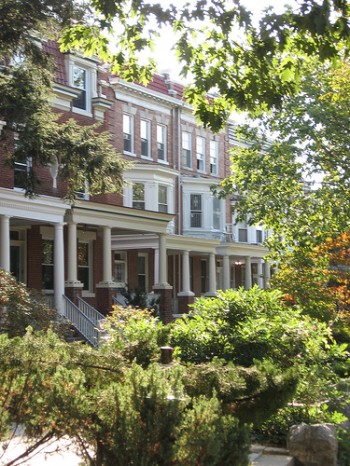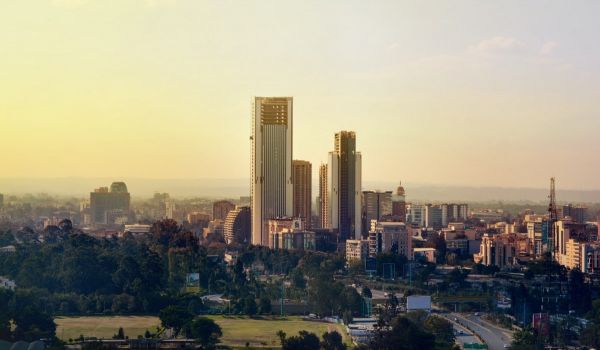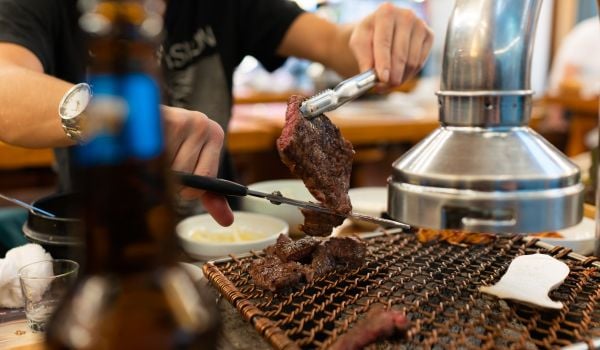Editor’s Note: Ben Adler, who has been an Urban Leaders fellow for Next American City since 2008, recently accepted a position as Articles Editor for National Affairs at Newsweek.com. Throughout his time at NAC, he has written prolifically for both the print magazine and the website, sounding off on legislation, the White House, and crime in Washington, D.C. Look for his profile of New York Mayor Michael Bloomberg in Issue 24 of NAC, to be released in September.
During my four and half year stay in Washington, D.C. I have not developed a reputation for loving my adopted city. I am prone to relentlessly criticizing its cuisine, its nightlife, its weather, its crime and its cultural offerings, sometimes even in writing. But, with my departure impending, I feel acutely nostalgic for my house, the block it sits on, and the neighborhood I have made my home, each of which are triumphs of good urban design.
I live on Hobart Street, in Mount Pleasant, a diverse neighborhood that is nestled on a hill between swampy Rock Creek Park to the west and 16th Street, the broad thoroughfare of luxury apartment buildings, churches and embassies that leads to the White House, to the east. Originally a streetcar suburb, Mount Pleasant’s commercial drag, Mount Pleasant Street, shoots off 16th Street at a northwest diagonal, gently welcoming you into the neighborhood.

Mount Pleasant, in Washington, D.C. Image via flickr.
As you enter Mount Pleasant, my street is the first you will pass on your left. It’s so low-profile that, like most cab drivers, you might not even notice it. But it is a world unto itself. Improbably long — at .3 miles it is the longest unbroken block in D.C. — it even has local politicians. There is the elderly African-American man who sits on his front porch every morning. He has some sort of speech impediment (from a stroke is my guess) so I cannot make out his name but I feel like we are friends. He wears a Washington Nationals baseball cap and shouts pleasantries as you pass. When he briefly disappeared my roommates feared the worst. But to our great relief he re-emerged, complaining about the noise from construction being done to the road bed.
Across the street is Morris Levitt, a retired professor of political science. Gay, widowered, Jewish and originally from New York, Morris is a lovable stereotype of himself. An avuncular mix of curmudgeon and mother hen, he lives in the biggest house on the block. It is a boxy, wide white brick mansion that Morris and his neighbors call Casa Blanca. Morris sits through the evening on his stoop, a long Benson and Hedges dangling languidly from one hand and a tumbler of whiskey in the other, kibbitzing with his young neighbors, while Elmo, his fat furry dog, scurries around. Sam, Morris’ tenant, is a Southern school teacher who unfailingly calls him “Mr. Levitt,” and repays Morris’ generosity in alcohol and cigarettes by barbecuing. “I never wanted a tenant,” says Morris, “but when he said he was a teacher…”
One night, I was hanging out on a porch with neighbors after 1 am, drinking wine and singing along to ad hoc guitar adaptations of pop songs. We heard a woman shouting from a window across the street and shushed to hear her, expecting an earful of “do you know what time it is?!” Instead she made a song request.
I call Morris the mayor of Lo Ho. That’s short for Lower Hobart, meaning the far third of the block where it dips steeply down the hill towards Rock Creek and gradually turns a full 90 degrees until it dead ends in a T intersection. Hobart is so long that it has micro-blocks. There’s Mid-Ho, where Tom, the terse middle-aged man who I always see walking his dog, hangs out with the thirty-something parents, gay couples and twenty-something renters. Then there’s Hi Ho, at the top of the hill, where the block flattens and straightens out and you feel like you’re back on the grid. From my house it might as well be California.
Every time I take a friend to my house for the first time I make sure to take them down the full length of my street because they usually pause, about one-third of the way in, and exclaim, “This is beautiful!” The street is narrow, and traffic runs both ways, with cars parked along each side. So traffic moves slowly and you never feel like an ant on a football field, as human beings so often do in a parking lot or alongside a boulevard. The early 20th century row houses look dignified — no squat ranch houses with sideways windows like you see in the Sun Belt, nor even the boxy condominiums that are saturating D.C. like coffee bars in Seattle. The short stoops leading to small covered porches engage the sidewalk. They transition smoothly from private to public space. From my front porch you have a striking vista, especially at night, when the street lamp casts lithe shadows from the trees on Casa Blanca. The front yards are small and filled with foliage, and the curb is lined with trees. In the spring, when everything is in bloom, the natural cover from both sides creates a full canopy of coverage for the pedestrian.
It should be unnecessary to say, but in this country it unfortunately needs saying, the garages sit in back of the homes, in a service alley. I am not known for extolling the urban design of D.C. over my hometown of New York, but the prevalence of alleys is a smart innovation. The trash is collected from them, keeping it off the curb and the smell away from pedestrians. There is a gray stone stairway off the alley that leads to the next block. I think of it as the secret shortcut, like something out of a children’s novel.
The street car that ran on Mount Pleasant Street is now a frustratingly slow bus, but otherwise Mount Pleasant looks a lot like it did in black and white photographs from 60 years ago. The houses, gradually growing grander as you approach the park; the apartment buildings, gradually growing bigger as you approach 16th Street; the stores on the ground floor of Mount Pleasant Street with apartments and offices for tax preparers and travel agents above them.
When I was growing up in Brooklyn, my family shopped in a way that is almost unheard-of for middle class Americans today. We did it on foot. And we didn’t go to chain super-stores. The butcher, the drug store, the fruit and vegetable stand, the cheese store, the shoe store, the hardware store. We knew the owners and the workers and they knew us. Gentrification changes many things. In Brooklyn it has brought Fairway and Home Depot and Foot Locker.
D.C. is, compared to New York, even today, a wholly owned subsidiary of chain stores. CVS and Starbucks have outlets that are often separated by just a block from the next one. Lacking the strong history of foreign immigration that shaped other East Coast cities, the stores that defined my childhood are generally non-existent: the Korean greengrocer, the Arab newsstand, the Greek diner, the Italian pizzeria or bakery.
But not so in Mount Pleasant. Mount Pleasant is home to a large concentration of Latino immigrants, mainly from El Salvador. As a result it has the gold standard for urban ethnic business: the bodega. It’s such a neighborhood that it has micro-neighborhoods: a laundromat at the southern end of Mount Pleasant, and one at the northern end, a mere four blocks away. Same goes for the dry cleaners, liquor stores and take-out Chinese.
The areas to the west, across the park, have always been well-to-do, and thus suffer from the bourgeois lameness of suburban America. The stores have brightly colored signs that proclaim their business loudly enough to be read from a passing car: “Lebanese Taverna, Yes! Organic Market, Tasti D-Lite.” To the east of Mount Pleasant are neighborhoods, such as Columbia Heights, that suffered such long and severe destitution that they had virtually no businesses. Now, gentrification in Columbia Heights means the importation of chains large and small, from Best Buy to Julia’s Empanadas, and high-concept faux local hangouts, such as an overpriced British gastropub and “Pete’s Apizza” (get it?)
In between sits Mount Pleasant, where gentrification has been a slow burn rather than a conflagration. Mount Pleasant was stabilized a generation ago by hippies and middle-class African-Americans who were attracted to the undervalued houses, but it never became a nightlife destination. Today, it feels integrated, rather than colonized. There are black and white families, renovated group houses for the young and clean cut and unrenovated ones for the not-necessarily-so-young or clean, immigrants stuffed into apartments, and unique little stores to cater to them all. We have a pharmacy, one of the few independent ones in the District, a basement video store (ditto), and a hardware store where the men behind the counter chat you up about neighborhood issues like the now-repealed ban on live music. There’s a precious Latino-influenced health food restaurant with a notoriously imperious owner and a mediocre bakery with a notoriously forgetful staff. There’s a farmers market that takes food stamps, a bar and grille that constantly changes its menu but knows better than to abandon its signature tater tots, and a dive bar where, this being D.C., after all, the long-haired, mustachioed bartender is a libertarian political blogger.
But, so far, there are no frozen yogurt emporiums, no places where you can get a macchiato, and, unless you count the sketchy hole-in-the-wall takeout joint that gave one of my roommates food poisoning, no sushi. These are boasts, not complaints.
Recently, I met a woman who lives in D.C. and reads Next American City. “I know your type,” she said in an arch, teasing tone. “You’re one of those people who lives in Mount Pleasant and loves to talk about how great it is.” I imagine that in Flirting for Dummies, it might say that I should have protested, or bashfully admitted that she had me pegged. But those thoughts did not cross my mind. Backing away from my Mount Pleasant boosterism would be like downplaying my New York dialect, my Yiddishkeit heritage, or my Brooklyn pride. I did not miss a beat. “Hell yeah,” I said. “That’s exactly what I am.”

Ben Adler is a journalist in New York. He is a former reporter for Grist, The Nation, Newsweek and Politico, and he has written for The New York Times, The Atlantic, The Guardian and The New Republic.

_600_350_80_s_c1.jpg)













